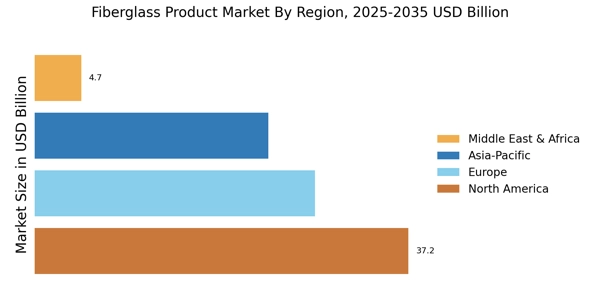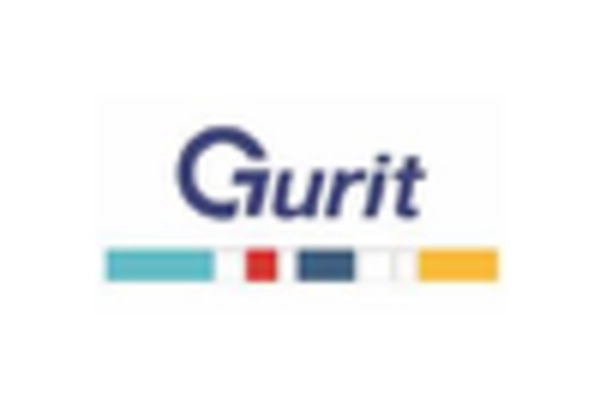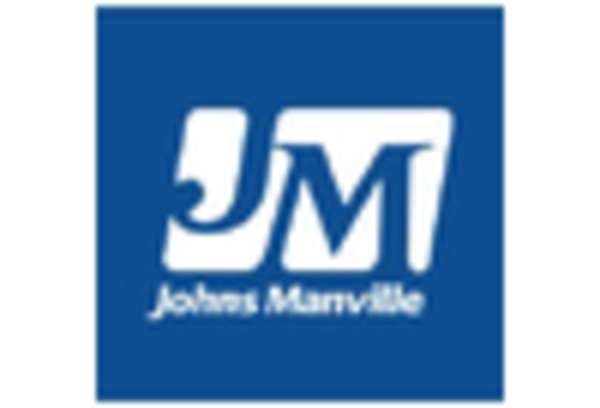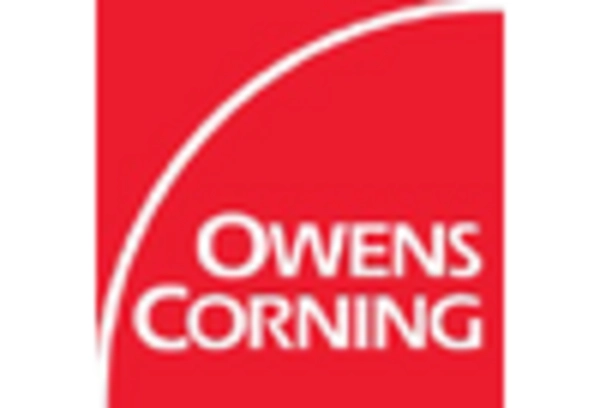Rising Demand in Construction Sector
The Fiberglass Product Market is experiencing a notable surge in demand, particularly within the construction sector. This increase is largely attributed to the material's lightweight nature, durability, and resistance to corrosion. As construction projects increasingly prioritize sustainability and energy efficiency, fiberglass products are becoming a preferred choice for insulation, roofing, and structural components. Recent data indicates that the construction sector's growth is projected to reach a value of approximately 10 trillion dollars by 2025, further driving the need for innovative materials like fiberglass. Consequently, the Fiberglass Product Market is poised to benefit from this trend, as builders and architects seek materials that not only meet performance standards but also contribute to environmentally friendly practices.
Diverse Applications Across Industries
The versatility of fiberglass products is a significant driver for the Fiberglass Product Market. These materials find applications across a multitude of sectors, including construction, automotive, aerospace, and consumer goods. The ability to tailor fiberglass properties to meet specific requirements makes it an attractive option for manufacturers. For example, in the automotive industry, fiberglass is utilized for lightweight components that enhance fuel efficiency. Similarly, in the construction sector, fiberglass-reinforced plastics are employed for their strength and durability. This broad applicability not only fuels demand but also encourages innovation within the Fiberglass Product Market, as companies strive to develop new solutions that leverage the unique characteristics of fiberglass.
Advancements in Manufacturing Technologies
Technological advancements are playing a pivotal role in shaping the Fiberglass Product Market. Innovations in manufacturing processes, such as automated production lines and improved resin formulations, are enhancing the efficiency and quality of fiberglass products. These advancements allow for greater customization and precision in product design, catering to the diverse needs of various industries. For instance, the introduction of advanced composite materials has expanded the application range of fiberglass, making it suitable for aerospace, automotive, and marine industries. As these technologies continue to evolve, the Fiberglass Product Market is likely to witness increased competitiveness and a broader array of product offerings, ultimately benefiting end-users.
Regulatory Support for Composite Materials
Regulatory frameworks are increasingly favoring the use of composite materials, including fiberglass, which is positively impacting the Fiberglass Product Market. Governments are implementing policies that promote the adoption of lightweight and durable materials in various applications, particularly in transportation and construction. These regulations often aim to enhance safety, reduce emissions, and improve energy efficiency. For instance, initiatives that encourage the use of fiberglass in public transportation systems are gaining traction, as they contribute to lower operational costs and improved performance. As regulatory support continues to grow, the Fiberglass Product Market is likely to experience accelerated growth, driven by the need for compliant and innovative material solutions.
Growing Awareness of Environmental Benefits
The Fiberglass Product Market is increasingly influenced by the growing awareness of environmental benefits associated with fiberglass materials. As industries and consumers alike become more conscious of their ecological footprint, the demand for sustainable materials is on the rise. Fiberglass products are often recyclable and can be produced with lower energy consumption compared to traditional materials. This shift towards sustainability is reflected in market trends, with a reported increase in the use of fiberglass in applications such as wind turbine blades and solar panel components. As a result, the Fiberglass Product Market is likely to see a continued expansion as stakeholders prioritize eco-friendly solutions in their operations.


















Leave a Comment